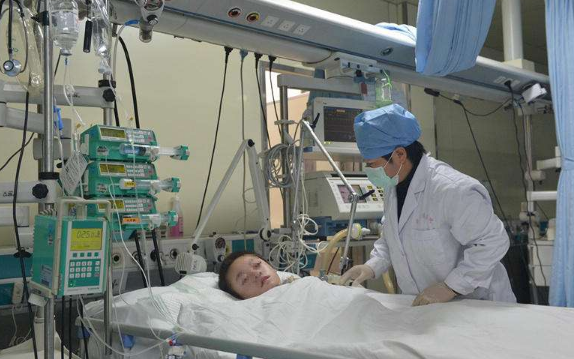摘要
目的: 回顾性分析103例重症肌无力(Myasthenia gravis,MG)患儿的临床资料,探讨其临床特征、疗效、预后及影响预后的因素。
方法: 收集103例重症肌无力患儿的临床资料,并对这些患儿进行门诊预约和/或电话随访(成功随访85例,随访时间>6个月),对其临床特征、辅助检查结果进行回顾性分析,并对治疗方案的疗效及预后的影响因素进行评估。
结果: 1、103例MG患儿中,男女比例为1:1.58,平均发病年龄为4.33±3.01岁,1-3岁发病的患儿共52例(50.49%),城乡来源比例为1:1.19。
2、103例MG患儿中,19例(18.45%)有上呼吸道感染前驱病史,6例(5.83%)患儿发病前有眼周外伤病史,1例(0.97%)有疫苗接种史。
3、103例患儿,99例(96.12%)首发症状为眼睑下垂;2例首发症状为眼球活动障碍(1.94%);1例(0.97%)首发症状为斜视;1例(0.97%)首发症状表现为全身型,症状为运动障碍、复视及斜视。

4、发病季节:春季发病35例(33.98%),夏季发病27例(26.21%),秋季发病19例(18.45%),冬季发病22例(21.36%)。
5、新斯的明实验阳性率98.06%(101/103);乙酰胆碱受体抗体(Acetylcholine receptor antibody,ACh R-Ab)阳性率53.62%(37/69),兰尼碱受体抗体(Ryanodine receptor antibody, Ry R-Ab)阳性率21.74%(15/69),余抗体阳性率较低,且ACh R-Ab及Ry R-Ab与发病年龄及性别无统计学意义(P>0.05);感染性病因:肺炎支原体Ig M阳性率46.53%(47/101),单纯疱疹病毒Ig M阳性率23.76%(24/101),副流感病毒Ig M阳性率13.86%(14/101),余病原阳性率较低;甲状腺功能异常比例34.62%(27/78);免疫球蛋白异常比例15.96%(15/94);自身免疫性疾病相关抗体异常比例41.51%(22/53);胸腺异常比例3.09%(3/97)。
6、对成功随访的85例患儿进行分析,总复发率27.06%(23/85),复发诱因为上呼吸道感染15例(65.22%),泼尼松减量3例(13.04%),冷食1例(4.35%),无明显诱因4例(17.39%);成功随访到的85例患儿,70例接受了静脉丙种球蛋白(Intravenous immune globulin,IVIG)+胆碱酯酶抑制剂(Cholinesterase inhibitor,Ch EI)+糖皮质激素(Glucocorticoid,GC)治疗方案,缓解率87.14%(61/70),无转化为全身型重症肌无力(Generalized myasthenia gravis,GMG)病例;7、患儿性别、发病年龄、发病诱因、首发症状、支原体感染、ACh R-Ab、Ry R-Ab、甲状腺功能、免疫球蛋白、自身免疫疾病相关抗体等因素与MG预后无显着相关性(P>0.05)。
结论: 1.儿童重症肌无力以眼肌型多见,除上睑下垂外,可伴有眼球活动障碍、斜视、复视、视物模糊及肢体无力等症状,极少转变为GMG。2.
MG患儿发病季节以春季居多,病原学感染以支原体感染为主,其次为单纯疱疹病毒及副流感病毒。3.
儿童MG相关抗体以ACh R-Ab及Ry R-Ab为主,Mu SK-Ab及Titin-Ab等抗体阳性率较低,ACh R-Ab及Ry R-Ab暂未见与预后情况的相关性,余抗体因样本量较少,需扩大样本量进一步研究。4.儿童重症肌无力采用IVIG+Ch EI+GC的治疗方案可获得较高的缓解率。
关键词: 儿童,重症肌无力,临床特征,影响因素,预后 。
Abstract
Objective: The clinical data of 103 children with myasthenia gravis (MG) were analyzed, and the clinical characteristics, curative effect, prognosis and factors influencing prognosis were discussed.
Methods: Clinical data of 103 children with myasthenia gravis were collected and followed up by outpatient appointment or telephone (85 patients were successfully followed up for more than 6 months with). The clinical characteristics and auxiliary examination results were retrospectively analyzed, and the therapeutic effect and prognostic factors were evaluated.
Results:1. Among the 103 children with myasthenia gravis, the ratio of male to female was 1:1.575, and the average age of onset was 4.33±3.01 years. A total of 52 (50.49%)children with onset between 1 and 3 years old . the ratio of urban and rural sources was 1:1.19. 2. Among the 103 MG children, 19 cases(18.45%) had a history of upper respiratory tract infection, 6 cases(5.83%) had a history of periocular trauma before onset, 1 cases(0.97%) had a history of vaccination, and the remaining 77 cases(74.75%) had no obvious preonset inducement. 3.Among the 103 children, 99 cases (96.12%) had the first symptom of blepharoptosis. The first symptom of 2 patients was eye movement disorder (1.94%),1 case (0.97%) showed strabismus as the first symptom. The first symptom of 1 case (0.97%) was systemic, with dyspnea, diplopia and strabismus. 4. Onset season: 35 cases (33.98%) in spring, 27 cases (26.21%) in summer, 19 cases (18.45%) in autumn and 22cases(21.36% ) in winter. 5. The positive rate of neostigmine experiment was 98.06% (101/103). The positive rate of ACh R-Ab was 53.62% (37/69), the positive rate of Ry R-Ab was 21.74% (15/69), and the residual antibody positive rate was low.
Antibodies related to myasthenia gravis had no statistical significance with age and sex of onset. Mycoplasma pneumoniae Ig M positive rate was 46.53% (47/101), herpes simplex virus Ig M positive rate was 23.76% (24/101), para-influenza virus Ig M positive rate was 13.86% (14/101) ,and the residual pathogen positive rate was low. The proportion of thyroid dysfunction was 34.62% (27/78). The proportion of abnormal immunoglobulin was 15.96% (15/94). The proportion of abnormal antibodies related to autoimmune diseases was 41.51% (22/53). The proportion of thymus abnormality was 3.09% (3/97). 6. Analysis of 85 children with successful follow-up showed that the total recurrence rate was 27.06% (23/85). The causes of recurrence were as follows: 15 cases of upper respiratory tract infection (65.22%), 3 cases of prednisone reduction (13.04%), 1 case of cold food (4.35%), and 4 cases of no obvious causes (17.39%). Of the 85 children who were successfully followed up, 70 cases received the treatment of IVIG+Ch EI+GC, with a remission rate of 87.14% (61/70). There were no patients with generalized myasthenia gravis. 7. There was no significant correlation between the gender, age of onset, pathogenesis, first symptoms, mycoplasma infection, ACh R-Ab, Ry R-Ab, thyroid function, immunoglobulin, autoimmune disease-related antibodies and MG prognosis (P >0.05).
Conclusion: 1. Myasthenia gravis in children is mostly seen in the eye muscle type. In addition to the ptosis, it can be accompanied by the symptoms of eye movement disorder,strabismus, diplopia, blurred vision and limb weakness, and rarely turns into GMG. 2. The onset season of MG children was mainly in the spring, and mycoplasma infection was themain etiological infection, followed by herpes simplex virus and parainfluenza virus. 3.In children, MG-related antibodies were mainly ACh R-Ab and Ry R-Ab, while the positiverate of Mu SK-Ab and Titin-Ab was relatively low. There was no correlation between ACh R-Ab and Ry R-Ab with the prognosis of MG. Due to the small sample size of remaining antibodies, it was necessary to expand the sample size for further study. 4. Treatment of myasthenia gravis in children with IVIG+Ch EI+GC resulted in a higher remission rate.
Key words: Children, Myasthenia gravis, Clinical features, Influencing factors, Prognosis。
前 言
儿童重症肌无力是一种儿童期获得性免疫介导的神经肌肉接头处疾病,可导致波动性骨骼肌无力,通常有晨轻暮重的特点,可以表现为全身型重症肌无力或眼肌型重症肌无力[1]。据报道,儿童重肌无力可在出生后第一年开始发病,其发病率约为1.6%,18岁以下约占所有MG的10%-15%[2]。与成人MG相比,儿童MG有其独特的临床特点及预后,同时意味着需与成人MG采用不同的治疗及管理方案。本研究通过对中国医科大学附属盛京医院小儿神经内科收治的103例MG患儿的临床数据分析及随访,归纳总结该研究中心MG儿童的临床特点、病原学、抗体、治疗及预后情况等,以指导临床对MG患儿的诊治及预后分析。
1. 资料和方法。
1.1、研究对象 。
选择2015年1月至2019年12月中国医科大学附属盛京医院小儿神经内科收治的103例MG患儿。
1.2、纳入标准。
符合2015年中国重症肌无力诊断和治疗指南诊断标准[3]:
1.临床表现:某些肌群如眼肌、骨骼肌等出现肌无力症状,表现为波动性及易疲劳性。
2.药理学表现:受累肌群完善甲基硫酸新斯的明试验提示阳性。
3.重复神经电刺激(Repetitiveneuroelectrical stimulation,RNS)检查提示低频刺激波幅递减大于10%,SFEMG测定回报“颤抖”增宽、伴或不伴有阻滞。在具备MG典型的临床表现的情况下,符合药理学特征及神经电生理学特征中的一条标准,临床上则可诊断为MG。排除标准:⑴临床上不能确诊重症肌无力;⑵合并其他如重症脑炎等危重病患儿。
收集2015年1月至2019年12月于我院小儿神经内科住院治疗的120例MG患儿的临床资料,按照纳入标准及排除标准,排除其中不符合标准的17例患儿后,对剩余符合标准的103例MG患儿进行回顾性分析及随访。
1.3、研究方法。
1.3.1、回顾性资料。
对于符合入组标准的103例MG患儿进行临床相关数据收集:
①基本情况:年龄、性别、城乡来源等;②临床特点:发病诱因、临床症状、发病季节等;③辅助检查:新斯的明实验、重复神经电刺激、重症肌无力相关抗体(ACh R-Ab、Ry R-Ab等)、病原学抗体(支原体、衣原体、EB病毒等)、甲状腺功能、免疫性疾病相关抗体(抗核抗体、ANA滴度等)、胸部CT;④治疗方案:选用 IVIG+Ch EI+GC的联合治疗方案。
1.3.2、随访资料。
通过门诊随访和/或电话随访方式,对出院6个月以上的患儿进行随访,随访内容包括用药情况,症状缓解情况及复发情况等。
【由于本篇文章为硕士论文,如需全文请点击底部下载全文链接】
1.4、疗效及预后评估.
1.5、统计学方法.
2. 结果.
2.1、患儿一般资料
2.2、MG患儿的临床特征
2.3、 MG患儿的临床检查.
2.4 、MG患儿临床治疗与疗效.
2.5、MG患儿的临床预后评估
3. 讨论.
4. 结论.
参考文献
本论文的创新性自我评价.
综述
8. 结 语
作为自身免疫力疾病,重症肌无力会对突触后膜产生影响,目前发现该病的发生,密切关联着ACh R-Ab,Mu SK-Ab,LRP4-Ab,Agrin-Ab,Titin-Ab等,但现阶段尚未明确这些抗体的致病机制,还有待于在未来的研究中,继续完善相应的治疗方法。
参考文献.
